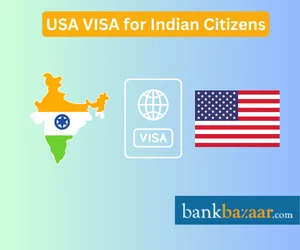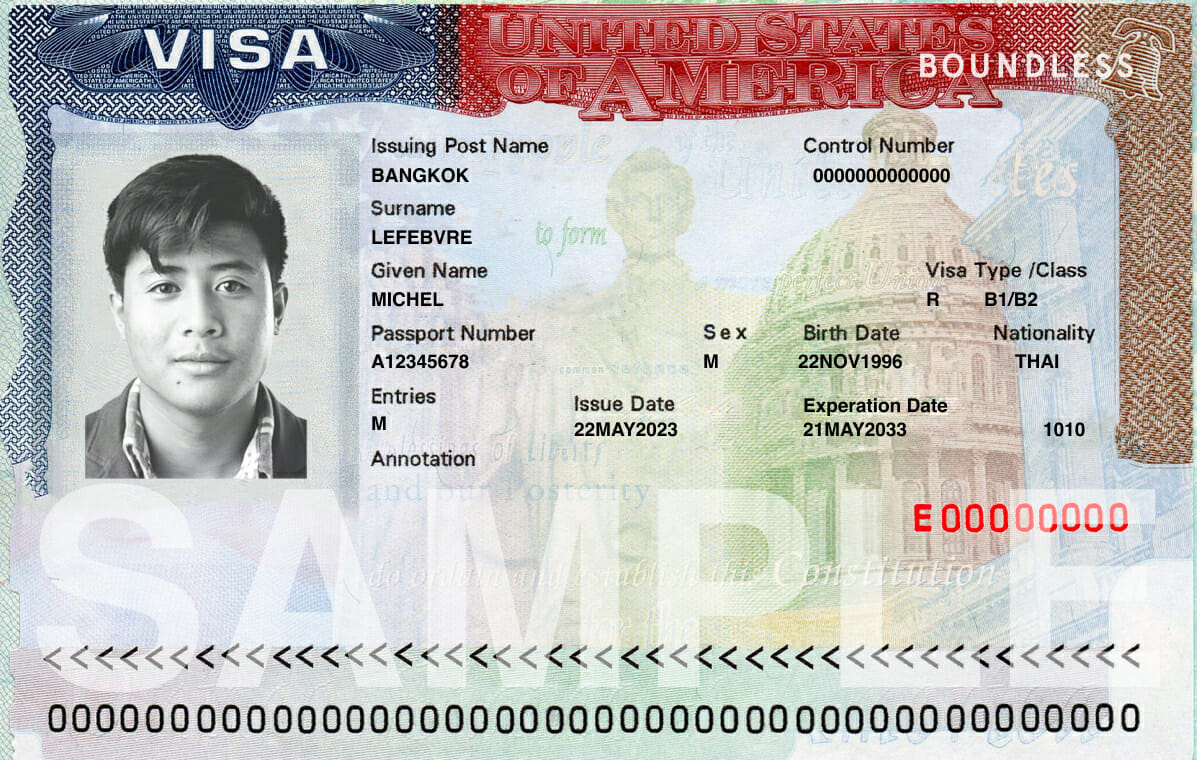Unlocking Opportunities: Necessary Info on US Visas for Indian People
Maneuvering the intricacies of U.S. visa options is important for Indian citizens aiming to check out chances in the USA. With various classifications ranging from short-term visitor visas to pathways for irreversible residency, understanding the subtleties of each can considerably influence one's journey. This conversation will certainly highlight essential information, consisting of application treatments and qualification requirements, that can encourage individuals in their quest of new experiences. As we unbox these crucial facets, the question develops: what strategies can one employ to enhance their chances of a successful application?
Review of United States Visa Kind
When going across the complex landscape of US migration, understanding the various kinds of visas readily available is crucial for Indian residents seeking entry right into the USA (Types Of US Visas). The US migration system is largely classified into two broad categories: immigrant visas and non-immigrant visas
Immigrant visas are marked for those planning to live permanently in the US. These consist of family-sponsored and employment-based visas, where applicants normally require an enroller. Non-immigrant visas, on the various other hand, deal with people seeking short-term house, such as travelers, service site visitors, and those taking a trip for details objectives like work or research.
Within the non-immigrant category, a number of visa kinds exist, consisting of B-1/ B-2 for organization and tourist, H-1B for specialized occupations, L-1 for intra-company transferees, and O-1 for people with remarkable abilities. Each visa has unique eligibility needs and application procedures, necessitating detailed research study to identify the ideal classification.
Comprehending these classifications is vital for Indian residents, as it allows them to browse the application procedure better, guaranteeing they select the appropriate visa type to fulfill their specific demands and goals. US Visas For Indian Citizens.
Student Visa Options
For Indian citizens desiring study in the United States, student visas offer an important path to pursue scholastic possibilities. The key visa classifications for students are the F-1 and M-1 visas.
The F-1 visa is assigned for scholastic students enrolled in a permanent program at a recognized organization, such as universities and colleges. This visa permits pupils to take part in on-campus employment and, under certain problems, join optional sensible training (OPT) after finishing their level, supplying important job experience in their field.
Conversely, the M-1 visa is meant for trade or non-academic programs. It provides to pupils pursuing technical or vocational training, enabling them to enlist in non-degree programs. M-1 visa holders may take part in useful training, but it is typically a lot more limited contrasted to the F-1 category.
To get a student visa, applicants should protect admission to a united state establishment, obtain a Form I-20, and show monetary capacity to sustain their education and living expenditures. Comprehending these visa alternatives is significant for Indian citizens intending to commence their educational journey in the United States.
copyright Categories
Several Indian citizens looking for job opportunity in the United States may take into consideration numerous job visa categories customized to different specialist demands and qualifications. The most popular job visa is the H-1B visa, created for experienced employees in specialty line of work requiring a greater education and learning level or its equivalent. It allows U.S. employers to momentarily utilize foreign employees, with a cap on the variety of visas provided yearly.
One more vital group is the L-1 visa, which facilitates the transfer of workers within multinational firms. The L-1A visa is for managers and execs, while the L-1B visa is for staff members with specialized understanding.
The O-1 visa accommodates people with phenomenal capacities in their area, consisting of science, arts, or organization. For farming or seasonal work, the H-2A and H-2B visas are available, allowing employers to hire international workers for short-lived settings.
Family-Based Immigration
Family-based migration provides a pathway for U.S. residents and authorized permanent locals to rejoin with their family members from India. This immigration group is essential for preserving familial bonds and helping with the integration of household members right into American society. United state residents can seek for instant family members, consisting of partners, kids, and moms and dads, without facing annual limits on visas. This expedited procedure substantially minimizes waiting times for these close family members connections.
In comparison, legal permanent locals may fund partners and unmarried children, but they undergo annual caps, leading to much longer wait times. The family-sponsored migration system is separated right into 2 major classifications: prompt loved ones and family members preference groups. The previous consists of those who have a direct connection with an U.S. person, while the last incorporates farther loved ones, such as brother or sisters and wedded children of citizens, and children of authorized permanent residents.
For Indian citizens looking for family-based migration, understanding the nuances of this system is crucial. Correct paperwork and adherence to application procedures are necessary for effective sponsorship. By navigating via these intricacies, families can function towards rejoining and developing their lives together in the United States.
Long-term Residency Process
The process of obtaining permanent residency in the United States includes a number of vital visa groups customized for Indian people. Recognizing the application actions, consisting of required paperwork and eligibility standards, is essential for a successful outcome. In addition, potential candidates must recognize the expected timeline and certain requirements connected with each category.
Visa Categories Overview
While passing through the intricacies of the U.S. immigration system, Indian citizens looking for permanent residency needs to familiarize themselves with numerous visa groups customized to various conditions. The key pathway for irreversible residency is with employment-based visas, which are classified right into numerous choices, consisting of EB-1 for individuals with amazing abilities, EB-2 for professionals holding innovative degrees, and EB-3 for experienced workers. Each category has particular eligibility requirements and processing times.

Variety visas, although restricted in number, offer an opportunity for people from underrepresented countries to use for permanent residency with a lottery game system. In addition, humanitarian alternatives such as asylum and evacuee status offer pathways for those encountering oppression.
Understanding these visa classifications is vital for Indian residents, as they significantly influence the technique for acquiring permanent residency in the USA. Each classification's subtleties and needs necessitate cautious consideration to align with specific conditions and goals.
Application Process Steps
Steering the application procedure for permanent residency in the United States involves numerous crucial actions that must be carefully followed to ensure a successful result. The journey generally begins with establishing the proper immigration category, such as employment-based or family-sponsored visas. Candidates need to gather necessary paperwork, consisting of proof of qualification, economic declarations, and individual recognition.
As soon as the classification is recognized, the next step is to submit the Type I-130 (Application for Alien Family Member) or Type I-140 (Immigrant Application for Alien Employee), depending upon the basis of the application. Complying with the authorization of the application, applicants will require to complete the National Visa Facility (NVC) handling by sending the needed costs and types.
Next off, the candidate must undertake a medical checkup and get police clearance certifications. Once these are completed, a meeting will certainly be arranged at the united state consular office or consular office. It is vital to prepare extensively for this interview, as it can greatly influence the choice on the application. Upon approval, the applicant will receive their visa, providing them permanent residency in the United States.
Timeline and Requirements
Charting the timeline and needs for obtaining irreversible residency in the USA is important for Indian citizens seeking to establish a lasting presence. The procedure mostly pivots on employment-based or family-sponsored pathways, each with details prerequisites and timelines.
For employment-based immigration, the process normally begins with a labor certification, which can take a number of months. As soon as approved, the employer files a Form I-140, Immigrant Application for Alien Worker, which can take an additional 6 months to a year, depending on the processing center. Following I-140 authorization, candidates might require to wait for their top priority day to come to be present, which can vary significantly based on the applicant's group and native land.
For family-sponsored migration, united state residents can request for prompt family members, which normally leads to faster processing. Various other household classifications might involve much longer wait times due to annual caps.
Application Procedures
Comprehending the application treatments for US visas is essential for Indian people seeking access into the USA. US Visas For Indian Citizens. This area will certainly provide a summary of various visa groups and lay out the detailed process for applying. By following these guidelines, candidates can browse the complexities of the visa successfully
Visa Categories Introduction
Maneuvering the different visa classifications offered to Indian citizens can be an intricate procedure, yet it is essential for those seeking to travel, function, or study in the United States. The U.S. visa system is categorized largely into non-immigrant and immigrant visas, each serving distinctive objectives.
Non-immigrant visas, such as B-1/ check here B-2 for organization and tourist, F-1 for academic research, and H-1B for specialized work, allow momentary stays. Candidates have to show their intent to return to India after their browse through.
On the other hand, immigrant visas, including family-sponsored and employment-based categories, provide a path to permanent residency. These visas usually require sponsorship from a family member or company in the U.S., in addition to a rigorous application procedure.

Step-by-Step Refine
Generally, the application procedure for U.S. visas entails several vital steps that applicants should thoroughly comply with to ensure a smooth experience. The initial step is to figure out the appropriate visa classification based upon the function of travel, such as work, study, or tourism. As soon as the classification is determined, candidates must complete the online DS-160 form, supplying accurate individual information and travel information.
After sending the DS-160, candidates ought to pay the visa cost, which differs by visa type. Next off, set up a consultation for a visa meeting at the closest U.S. Embassy or Consulate. Types Of US Visas. It is essential to plan for the interview by event required records, including a valid ticket, visa confirmation, charge settlement receipt, and any supporting paperwork particular to the visa group
On the day of the meeting, show up punctually and dress appropriately. During the meeting, be prepared to address inquiries regarding your traveling intentions, financial security, and connections to India. If authorized, the visa will be marked in the key, allowing for travel to the United States. Following these actions guarantees a well-organized and effective copyright procedure for Indian citizens.
Tips for a Successful Application

Make certain that all kinds are completed properly and honestly. Small errors or noninclusions can result in delays or perhaps rejections. It is a good idea to gather all necessary sustaining documents, including monetary declarations, employment letters, and proof of connections to India, which show your intent to return post-visit.
Prepare for your visa meeting by practicing reactions to usual questions connected to your travel plans and background - US Visas For Indian Citizens. Confidence and quality can greatly influence the police officer's impact. Consider looking for aid from reputable immigration specialists if you really feel overwhelmed.
Often Asked Questions
What Are the Processing Times for US Visa Applications?
Handling times for U.S. visa can vary substantially based on the visa type, application volume, and the candidate's location - Types Of US Visas. Generally, candidates must expect a handling duration varying from a few weeks to numerous months
Can I Change My Visa Standing While in the US?
Yes, people can change their visa condition while in the United States, offered they fulfill qualification demands and comply with correct treatments. It is essential to file the proper application with U.S. Citizenship and Immigration Provider (USCIS)
Exist Age Limits for United States Visa Applicants?
There are typically no certain age limits for united state visa applicants; nevertheless, particular visa categories may have age-related qualification criteria. It's vital to review the needs for each visa type to ensure compliance.
What Are Typical Reasons copyright Denial?
Typical reasons copyright rejection consist of insufficient funds, failing to show ties to the home country, insufficient application kinds, lack of appropriate documents, previous immigration offenses, and failure to fulfill eligibility standards for the certain visa group.
Exactly How Can I Appeal a Visa Denial Choice?
To appeal a visa denial, evaluate the consular police officer's reasons, collect supporting paperwork, and submit an official charm to the suitable authority, making certain to comply with specified timelines and procedural needs for the appeal procedure.